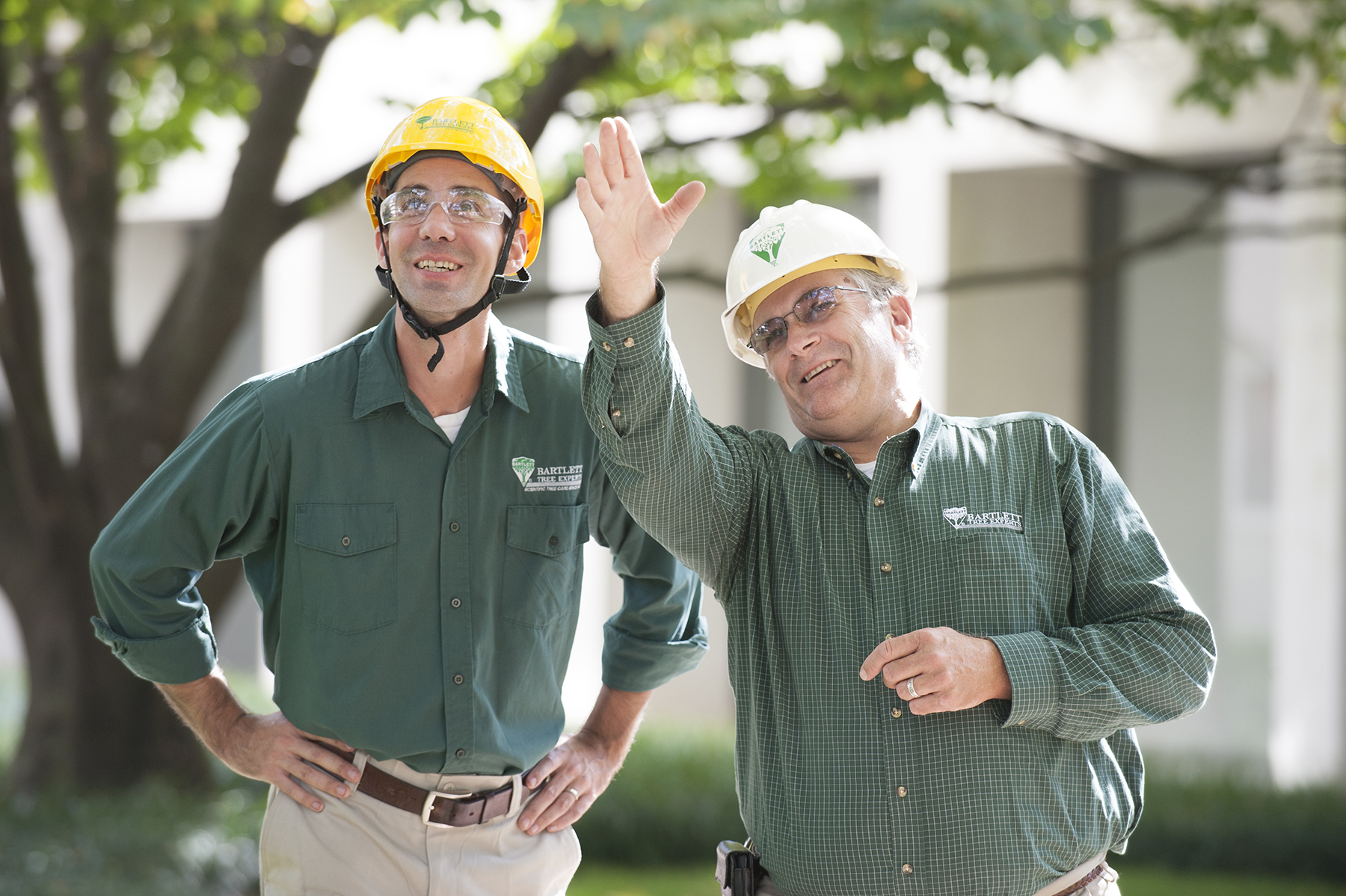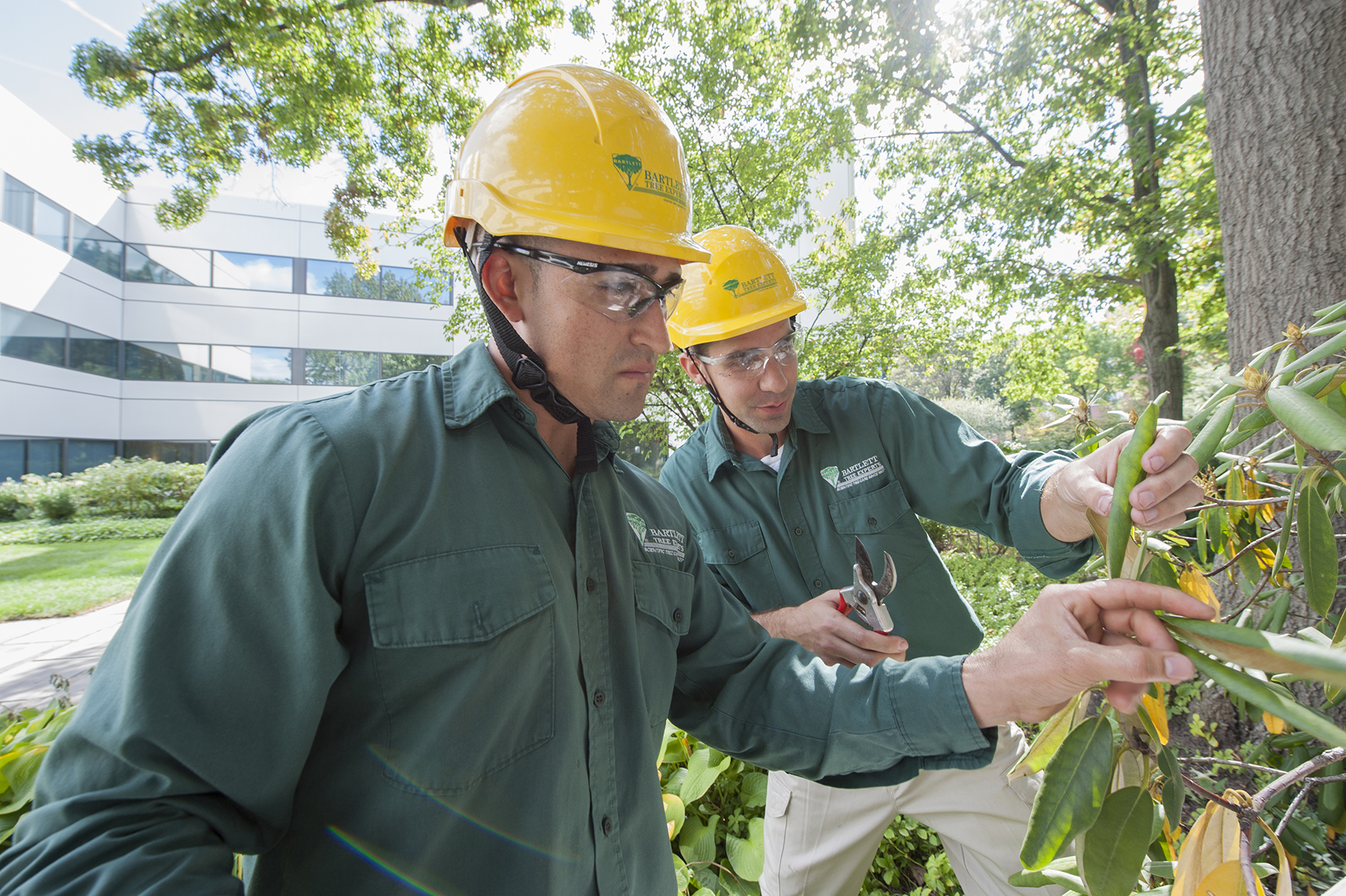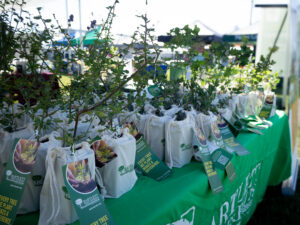The trees in your landscape will continue to grow and change whether there’s money to care for them or not. Consider that preventing tree problems is nearly always going to be more effective and less expensive than reacting to those problems after the fact. As you plan for 2017, be sure your landscape budget addresses these three key tree care concerns.

Putting Safety Above All Else
A safe landscape requires more than just removal of dead trees. Beyond these obvious hazards, a number of structural defects exist that may result in partial or total tree failure – especially for trees near walkways, parking lots and structures. Codominant stems, cracks, root or soil problems, decay, and broken or hanging branches are all indicators of a potentially risky situation on a property.
Ignore these defects and not only do you compromise safety on the property, but you may also take a big, unexpected hit to your budget. It’s better to evaluate tree defects upfront so that any issues that need to be addressed can be based on budget and level of risk involved.
Making a Good First Impression
Trees and shrubs are often the most dominant feature in a landscape. When they look bad, the landscape looks bad. Once a tree or shrub has lost some part of its aesthetic appeal, bringing back its vibrancy doesn’t happen immediately. Trees with pale, yellow leaves resulting from chlorosis may take many months to respond depending on the treatment type. Foliage with holes from caterpillar feeding in spring will remain throughout that growing season. Symptoms will persist and worsen – regardless of the funds available in the current year’s budget.
Earmarking a portion of that budget for ongoing plant healthcare can prevent these types of problems, keeping your trees beautiful year-round. Preventive plant healthcare looks at the health of the plant from the roots to the shoots. This includes soil testing to uncover nutrient problems as well as regular inspections to detect insect and disease infestations early, before damage becomes apparent.

Planning for the Life of Your Trees
Each tree and shrub on your property has different needs. Some may be young while others are established in the landscape. Some may be thriving in their current growing conditions, while others have seen better days. We’d like to think that every one of those trees is your priority, but we also know that’s just not possible when most budgets are stretched about as far as they can go. It’s important for property managers to consider the entire lifespan of their plants – anticipating and planning for changing needs over time.
A tree inventory is an essential budget item for proactively managing a tree population. It provides specific data on the species, location, size, age, and condition of every tree on a property. Analysis of this data yields sustainable management plans based on rational budgets. When property managers know what their trees need, and when, they can make more informed decisions on how to balance those needs with budgetary requirements.



